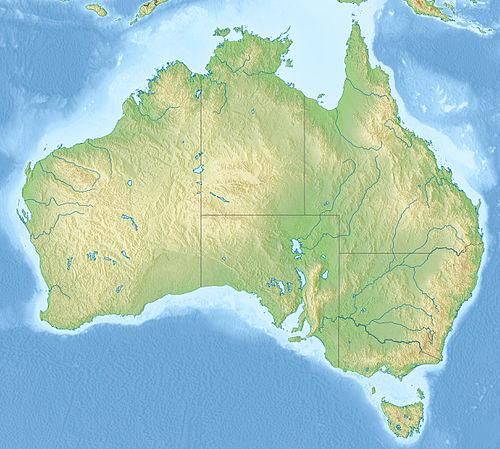Australia is set to engage in diplomatic efforts with UNESCO following the decision to exclude an ancient rock site from the World Heritage list, citing concerns over emissions linked to Woodside Petroleum’s activities. The move has sparked controversy as the government seeks to challenge the ruling, highlighting tensions between heritage preservation and the country’s resource development sector. This development underscores the growing global scrutiny of environmental impacts on culturally significant landmarks.
Australia Challenges UNESCO Decision Over Rock Site Exclusion Linked to Woodside Emissions
Australia has expressed strong opposition to UNESCO’s recent decision to exclude a significant ancient rock site from the World Heritage List, a move influenced by concerns over emissions linked to Woodside Petroleum’s operations. The federal government argues that the exclusion disregards the site’s profound cultural value and the stringent environmental regulations already imposed on Woodside’s activities. Canberra is preparing to lobby UNESCO intensively, emphasizing both the site’s indigenous heritage importance and Australia’s commitment to balancing heritage conservation with responsible resource development.
Key points raised by the Australian authorities include:
- Cultural Significance: The rock art and geological formations represent thousands of years of Aboriginal history.
- Environmental Controls: Strict emission reduction measures have been applied to Woodside’s projects, mitigating the impact.
- Economic Considerations: The site’s exclusion could hamper regional development and undermine resource sector investments.
| Aspect | Australia’s Position | UNESCO Reasoning |
|---|---|---|
| Heritage Value | High cultural importance acknowledged | Concerns over environmental impact |
| Environmental Impact | Controlled emissions from operations | Attributed emissions to Woodside resources |
| Economic Impact | Supports local economies and jobs | Not a primary factor in decision |
Environmental Impact of Woodside Operations Spurs Heritage Listing Controversy
Woodside’s ongoing emissions from its industrial operations have thrust a significant ancient rock site into the eye of a heritage listing battle, as environmental concerns clash with cultural preservation efforts. The site, revered for its millennia-old Indigenous art and cultural significance, has been excluded from UNESCO’s World Heritage list, largely due to the substantial carbon footprint attributed to nearby fossil fuel activities managed by Woodside. This decision has sparked widespread debate among environmentalists, Indigenous communities, and government officials, who argue that the exclusion undermines conservation efforts and the recognition of the site’s global cultural value.
Key issues highlighted in the controversy include:
- Rising greenhouse gas emissions linked directly to Woodside’s oil and gas extraction operations.
- Potential long-term damage to the rock site’s fragile ecosystem and cultural landmarks.
- Pressure on the Australian government to reconcile economic interests with international environmental obligations.
- Calls from Indigenous groups for greater inclusion in decision-making processes concerning heritage conservation.
| Aspect | Impact | Stakeholders |
|---|---|---|
| Carbon Emissions | 40% increase in regional levels over 5 years | Woodside, Environmental Agencies |
| Cultural Value | Irreplaceable Indigenous heritage | Local Communities, UNESCO |
| Government Response | Lobbying to reverse UNESCO decision | Australian Government |
Calls for Revised Emission Standards to Protect Cultural and Natural Landmarks
Environmental advocates and cultural custodians are intensifying appeals for stronger emission regulations following the controversial decision to exclude the ancient rock site from Unesco’s World Heritage list. Experts argue that the continuous greenhouse gas emissions linked to nearby industrial activities, particularly from Woodside Energy’s operations, have catalyzed unprecedented pressures not only on global climate but on irreplaceable cultural landscapes as well. This case underscores a widening recognition that protecting natural wonders requires robust policies that explicitly factor in industrial emissions.
Key demands shaping the call for tougher standards include:
- Implementation of emission caps tailored to sensitive heritage zones
- Mandatory environmental impact assessments integrating cultural significance
- Enhanced transparency and enforcement mechanisms for industrial pollutants
- Greater collaboration between Indigenous communities, scientists, and policymakers
| Emission Source | Average Annual Emissions (kt CO2e) | Impact on Heritage Status |
|---|---|---|
| Woodside Operations | 450 | Significant risk |
| Transportation Emissions | 120 | Moderate risk |
| Regional Agriculture |
Summary of Calls for Emission Standards in Relation to Heritage Site ProtectionContext: Key Demands for Policy Action:
Emissions Data & Risks: If you want, I can help reconstruct the table or analyze the impacts further. Let me know if you would like additional detail or recommendations on policy frameworks! In SummaryAs Australia prepares to lobby UNESCO in response to the barring of the ancient rock site from the World Heritage list, the case highlights the growing tension between environmental concerns and cultural heritage preservation. With emissions from industry actors like Woodside at the center of the debate, the outcome will not only impact this iconic landmark but could also set a precedent for how climate-related factors influence future heritage assessments. Stakeholders on all sides await UNESCO’s next steps, which will reverberate across both the environmental and cultural sectors. |




